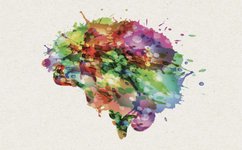Sublime
An inspiration engine for ideas
Our brains are constantly making connections that are outside our awareness.
Francine Shapiro • Getting Past Your Past


Overall, we found that no brain region contained the fingerprint for any single emotion. Fingerprints are also absent if you consider multiple connected regions at once (a brain network), or stimulate individual neurons with electricity. The same results hold in experiments with other animals that allegedly have emotion circuits, such as monkeys
... See moreLisa Feldman Barrett • How Emotions Are Made
acid, is a neurotransmitter that plays an important role in the prefrontal inhibition of subcortical firing, and she had imagined it as
Daniel J. Siegel • Mindsight: The New Science of Personal Transformation
The “Astonishing Hypothesis” offers a cogent explanation: if consciousness arises from the interactions of a pack of neurons, then splitting that pack—and their interactions—can split consciousness.
Donald Hoffman • The Case Against Reality
There is a set of linked structures in the brain that are more active whenever we are processing events from an egocentric point of view—thinking about what I want, what I need to do next, or what other people think of me. These brain structures are so often active together that they are collectively called the default mode network (DMN), meaning
... See moreJonathan Haidt • The Anxious Generation: How the Great Rewiring of Childhood Is Causing an Epidemic of Mental Illness
“Neuroception” is a term coined by Stephen Porges to describe how neural circuits distinguish whether a situation is safe, threatening, or dangerous.
Stanley Rosenberg • Accessing the Healing Power of the Vagus Nerve: Self-Help Exercises for Anxiety, Depression, Trauma, and Autism
Human beings are not at the mercy of mythical emotion circuits buried deep within animalistic parts of our highly evolved brain: we are architects of our own experience.